The 2015 Razer Blade Review
by Brett Howse on February 11, 2015 2:00 PM EST- Posted in
- Laptops
- Razer
- Razer Blade
- Notebooks
- GTX970M
Display
The 2013 Razer Blade had a 1600x900 TN panel, and for 2014 Razer replaced it with a Sharp IGZO 3200x1800 LCD. At 262 pixels per inch, it was one of the higher DPI panels on any laptop last year. While High DPI in the Windows world is not perfect, it has gotten a lot better over the last year. In my experience, the benefits of High DPI outweigh the drawbacks. Major vendors like Adobe have released High DPI aware versions of their software suites, and even Google Chrome has made good progress with High DPI support in Windows this year. The situation is still not perfect, but we are getting better. Steam used to have issues, but they have all been resolved, however Origin does not scale at all. Still, the display in the 2014 Razer Blade was one of its stand out features.
For 2015, Razer has kept the exact same display, which is not a bad thing at all. The 2014 Razer Blade had one of the more accurate displays out of the box, with decent brightness and great contrast. As this is a Sharp IGZO (Indium Gallium Zinc Oxide) thin film transistor (TFT) based LCD, the thinner TFT allows more light to pass through, and keeps the power requirements of the backlight down. Some panels go with a Red Green Blue White pixel arrangement, with the white pixel just there to increase brightness. Sharp’s IGZO panels keep with the standard RGB stripe, allowing the possibility for a more accurate panel.
Razer includes a default color profile for the display as well. Blade.icm pulls the calibration in a lot closer than the standard panel would be. Just because it is IGZO (possibly AHVA but certainly not TN) does not mean it is going to be accurate, so it is good to see the default color profile included as most people do not have any equipment to calibrate the monitor themselves. All of our uncalibrated tests were run with the Blade.icm as the default profile for Windows.
To calibrate our displays, we use SpectralCal’s CalMAN 5 software suite with a custom workflow. An X-Rite i1Display Pro colorimeter is used for brightness and contrast measurements, and an X-Rite i1Pro Spectrophotometer is used for color accuracy tests. We calibrate all displays to the sRGB standard, and to 200 nits brightness.
Uncalibrated with default Blade.icm profile
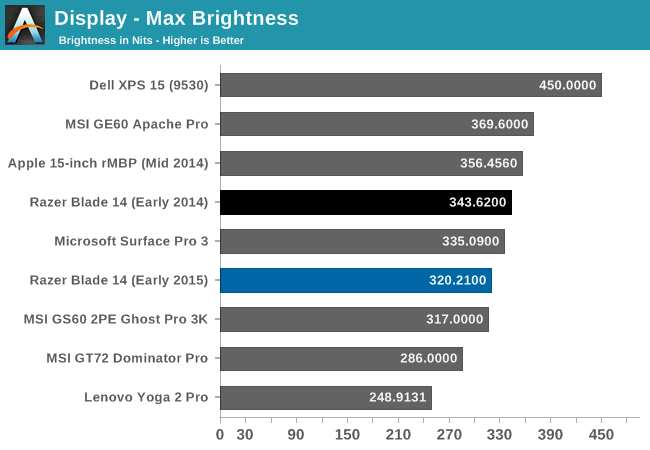
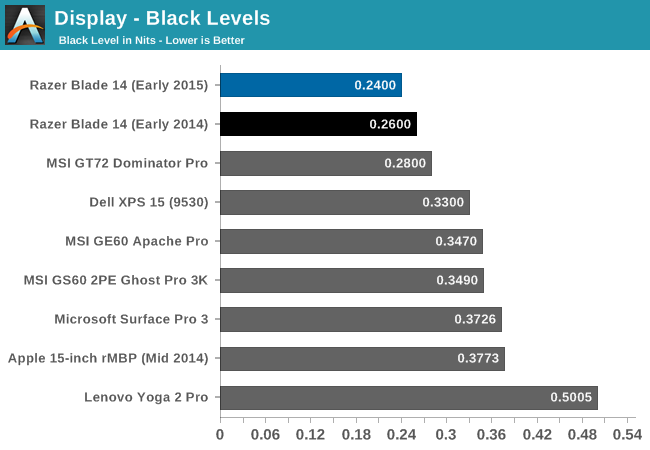
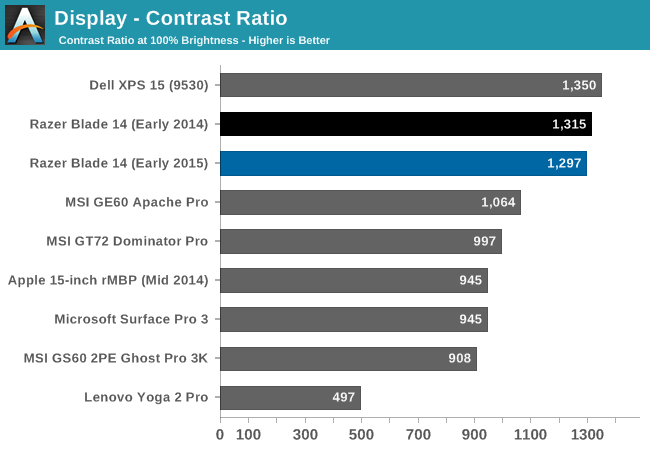
Razer rates the Blade at 350 nits, and it fell a bit short of that mark. This year’s model that was received could achieve 320 nits. Contrast ratio was still very good though with excellent black levels.
Here we can start to see that our 2015 sample was not as dialed in, with a blue shift happening at the higher end of the grayscale sweep, pulling the grayscale up to 5.1. White point is a bit blue as well at 7121.
Saturations are also a bit higher in this year’s model, with a jump to just over three. Three is still a good value though.
GMB drops compared to the 2014 model, but still comes in at a very respectable 2.58. We would like values under three if possible, and the review unit delivers.
So out of the box, with the Razer color profile, the review unit in hand today does not quite live up to the lofty results from the 2014 model. It still comes in with a good solid result, but does not top the charts for this year.
However, we can also calibrate it to see if we can improve it. Since the main issue was the grayscale being off, this is something that can be corrected through calibration.
Calibrated – 200 nits
Now we can see that the 2015 panel is just as good as the 2014 panel (which is not a huge surprise since it is the same specification) and the grayscale falls to just 0.7, and the improvements in gamut, saturation, and GMB with the new icc file bring those values in around 1.0 to 1.5. Just like last year, the blue value still overshoots, but the result is a fantastic.
One thing that we do not normally mention in our laptop reviews is minimum brightness, because normally, it is very low. As an example, the Yoga 2 Pro goes all the way down to under 3 nits. That is a bit excessive, but the HP Stream minimum brightness is 16 nits, and the Dell Latitude E5250 was 15 nits. Somewhere around 15-20 nits is good, and lets you use the laptop in a dark room very easily.
The Razer Blade has a minimum brightness of 90 nits. This is far too high for a minimum brightness, and makes it a chore to use in a dark room. Hopefully Razer can release a BIOS upgrade with new settings and allow this to go lower.




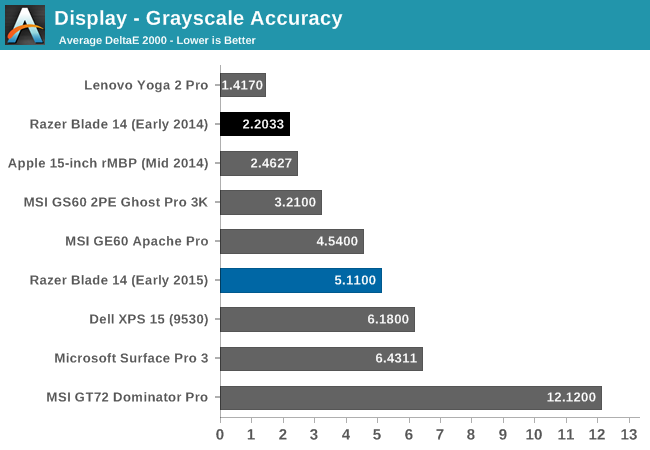

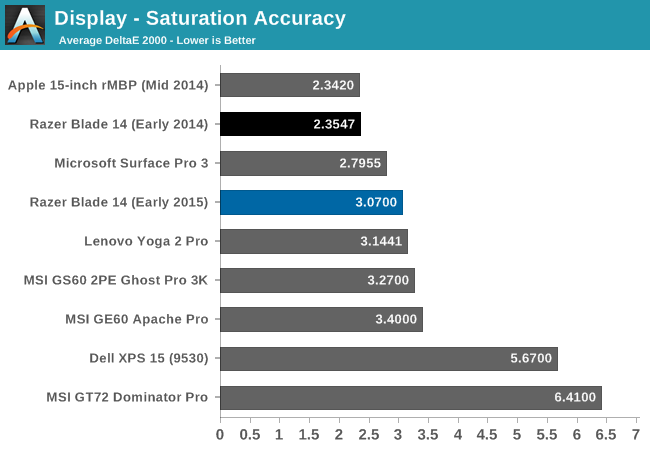

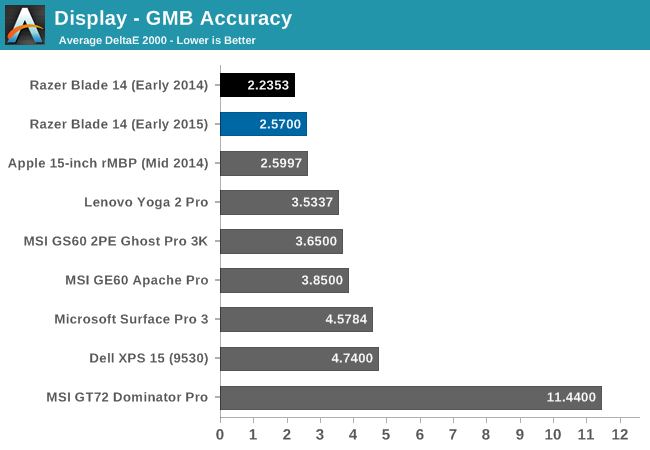

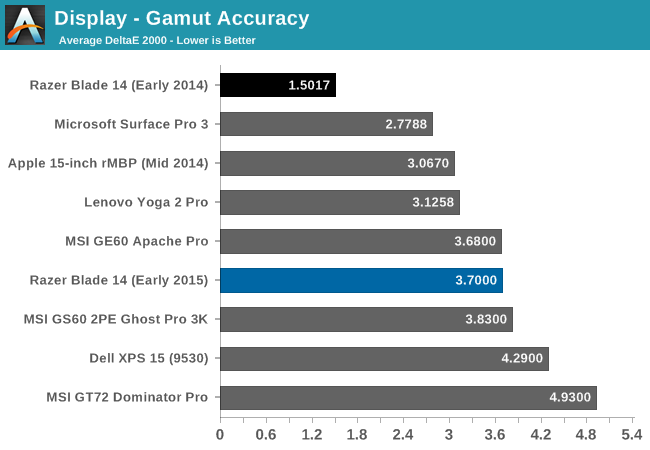
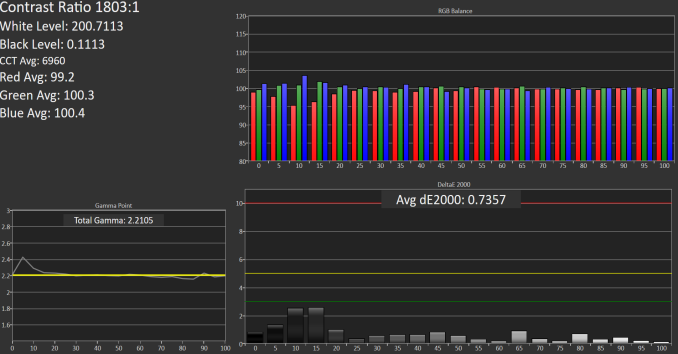
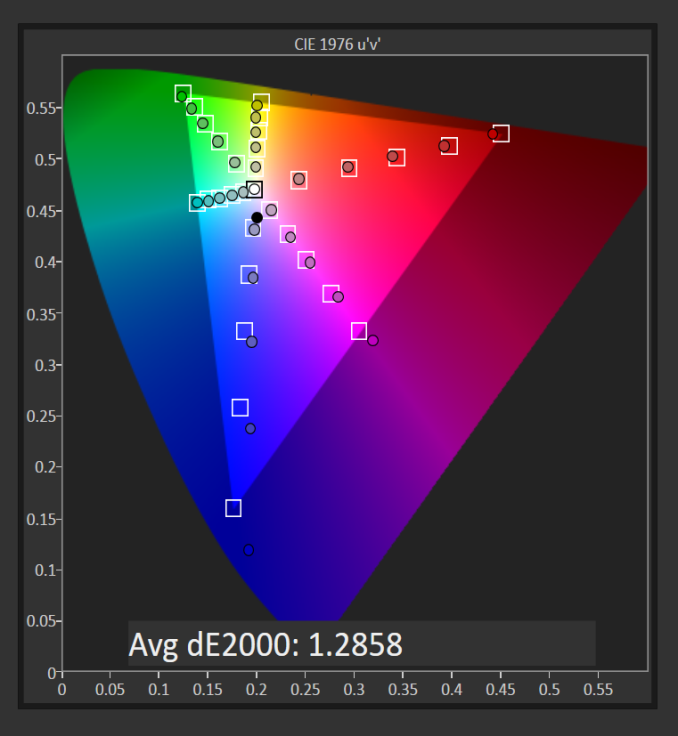
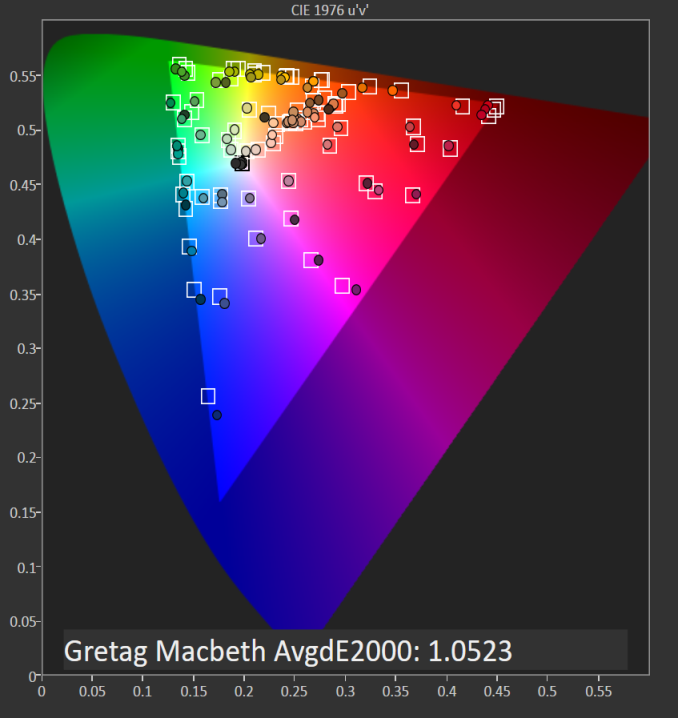









116 Comments
View All Comments
awlllwa - Tuesday, February 17, 2015 - link
completely forgot about that.douglord - Thursday, February 12, 2015 - link
I'd like one with a Broadwell processor and 980m. I know 4 core Broadwell isn't out yet, but I'd rather wait OR get a 2 core U CPU. For gaming, wouldn't that be better? Glad they have a 1080p option. We are still a ways off from being able to do 4k gaming, and anything in between 1080p and 4k just doesn't make sense to me from a media standpoint.xenol - Thursday, February 12, 2015 - link
Yes! An heat mapping of the chassis!Thank you guys. This is sorely missing from most laptop reviews. I'll be sure to add Anandtech to the list of who to go to now if I want to look into a laptop.
warezme - Thursday, February 12, 2015 - link
I second all of the above in the review. I just received my Razer yesterday. I ran the Monster Hunter Online benchmark at 1920x1080 and it scored more than twice as fast as my old 17" Alienware M17x R3 with GTX580M it was replacing. I still love that old laptop but it's time has passed. When I bought that years ago, i also clicked all the highest CPU and GPU settings I could get on that model. How time flies.dragonsqrrl - Thursday, February 12, 2015 - link
"Razer has told me that their data shows that more people prefer HDMI at this time, so they are sticking with this over DisplayPort for the external monitor connection."Who are these people? Would it really hurt to put both?
sviola - Thursday, February 12, 2015 - link
Probably people that plugs it into TVs.Oxford_Guy - Sunday, February 15, 2015 - link
But it's such a simple thing to get a miniDisplay Port to HDMI cable...D. Lister - Thursday, February 12, 2015 - link
3200x1800 is an extremely poor screen res choice for any single GPU, mobile or not, and at a meager 14", the loss in frame rates would far outweigh the gain in pixels (over a 1080p panel).TheinsanegamerN - Tuesday, February 17, 2015 - link
Ideally, since 3200x1800 is exactly double 1600x900, you would run the games at 1600x900, and the desktop at 32001800 with 200% dpi.faster - Thursday, February 12, 2015 - link
$2000.00+ for a 14" laptop? No thanks.I wouldn't want a 14" laptop at any price.